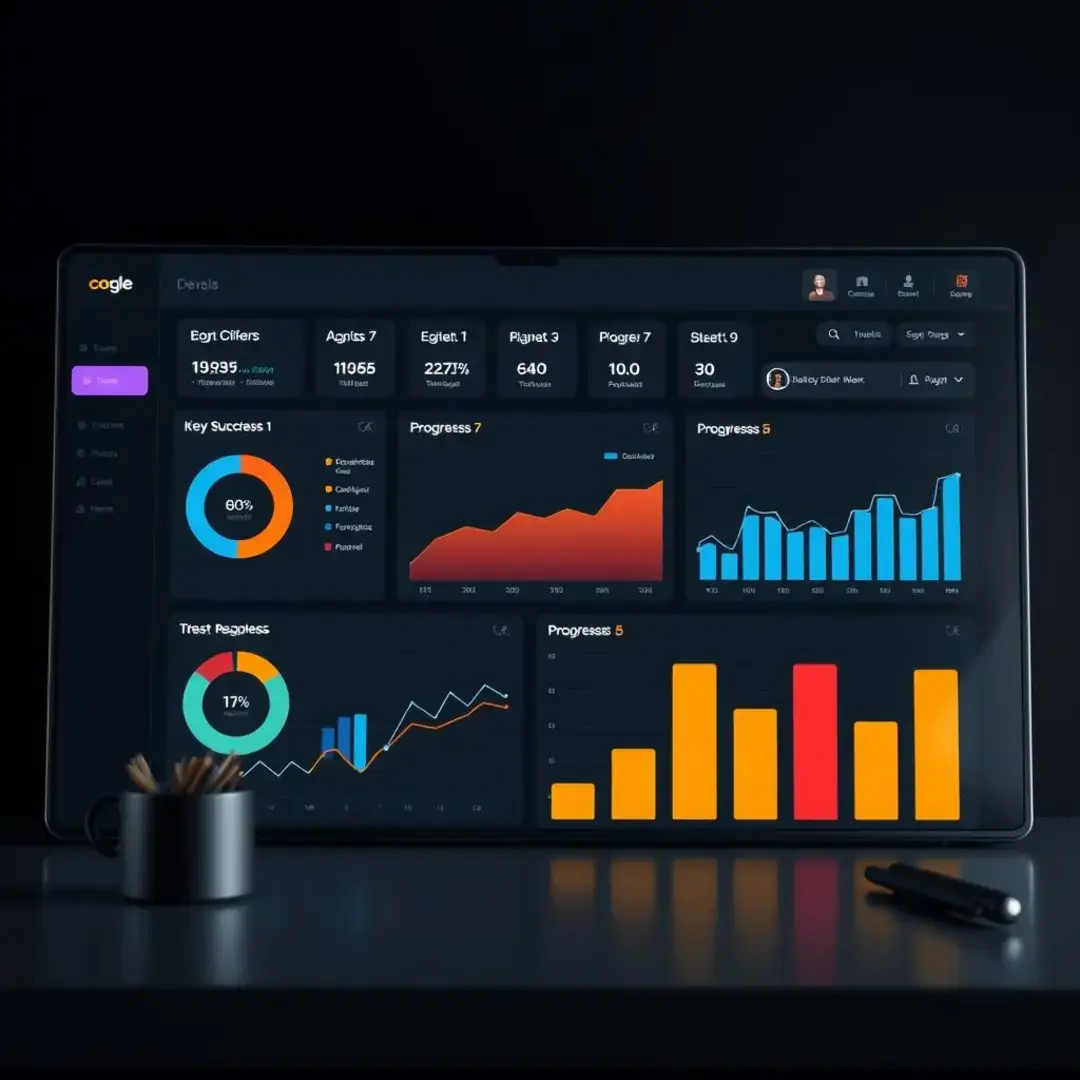Key success indicators: Measure progress & achievements
Defining Key Success Indicators (KSIs) for Advanced Applications

Understanding the Nuances of KSIs
Key Success Indicators (KSIs) are more than just numbers; they are essential metrics that help organizations assess their performance and guide future strategies. While traditional metrics can provide a snapshot of success, KSIs delve deeper by offering insights that are both meaningful and actionable. Understanding this distinction is crucial for startups looking to measure their achievements effectively.
For KSIs to be truly effective, they must align seamlessly with the organization’s strategic objectives. This alignment ensures that every metric collected serves a purpose that resonates with the company’s overall goals. By doing so, startups can not only track their progress but also motivate their teams to strive towards shared visions.
In today’s fast-paced business environment, agility is key. KSIs play a pivotal role in agile environments by providing real-time feedback that can influence quick decision-making. By regularly reviewing and adjusting KSIs, teams can ensure they are responsive to changes, allowing for dynamic adjustments to both strategy and execution.
Selecting the Right KSIs for Complex Projects
Choosing the right KSIs involves a strategic blend of qualitative and quantitative measures. Quantitative KSIs, like revenue growth or customer acquisition rates, offer hard data that can be analyzed with precision. Meanwhile, qualitative KSIs, such as customer satisfaction or employee engagement ratings, provide deeper insights into the sentiments and perceptions that drive organizational success.
Not all KSIs are created equal, and prioritization is essential for impact. Startups should focus on a streamlined set of KSIs that align with their immediate goals while still capturing the broader narrative of their progress. This way, teams can remain agile and responsive without getting inundated by excessive data points.
While it’s tempting to showcase impressive data, vanity metrics can often distort the true picture of success. Startups must be diligent in distinguishing between metrics that look good on paper and those that provide actionable insights. Focusing on KSIs that lead to informed decision-making can ultimately enhance performance and drive growth.
Implementing and Monitoring KSIs Effectively

Building a Robust KSI Framework
For KSIs to be effective, they should be fully integrated into existing reporting systems. This integration allows for seamless tracking and easy access to vital data. When users can view KSIs alongside traditional metrics, it provides a clearer picture of overall organizational health, making it easier to ascertain areas needing improvement.
Effective KSI measurement begins with clear data collection processes. Startups should outline standardized methods for collecting data to ensure accuracy and reliability. These processes should be regularly reviewed and updated as necessary to incorporate new insights or challenges that arise in the business landscape.
Data can often be overwhelming, but effective visualization can turn complex information into understandable insights. By leveraging charts, graphs, and dashboards, startups can present KSIs in a way that is visually appealing and easy to interpret. This not only aids in internal discussions but also helps in communicating progress to stakeholders.
Analyzing KSI Data and Driving Continuous Improvement
Data analysis techniques can greatly enhance the value derived from KSIs. Startups can employ advanced analytics and predictive modeling to uncover hidden patterns and insights. These advanced techniques enable businesses to be proactive in addressing issues before they escalate, fostering a culture of continuous improvement.
Regular analysis of KSI data allows startups to identify persistent trends and performance patterns. By understanding these trends, organizations can better anticipate challenges and capitalize on opportunities. This foresight is key in maintaining competitive advantages in rapidly changing markets.
Ultimately, KSIs should serve as a compass for strategic decision-making. When decisions are based on clear, actionable insights from KSIs, startups can navigate their course with confidence. Being data-driven fosters an environment where strategic adjustments can be made swiftly and intelligently, ensuring businesses remain on the path to success.
Advanced Strategies for KSI Optimization

Predictive Modeling with KSIs
Predictive modeling can be a game changer for startups utilizing KSIs. By analyzing historical data and applying predictive algorithms, organizations can forecast potential future performance based on current trends. This forward-looking perspective enables businesses to strategize proactively rather than reactively, marking a substantial competitive advantage.
Machine learning technologies allow for the dynamic analysis of KSI data, adapting predictions based on real-time inputs. This capability can lead to unprecedented insights, as algorithms learn from ongoing trends to refine their outputs. Startups that embrace machine learning in their KSI analysis position themselves at the forefront of innovation in performance measurement.
Integrating KSIs Across Departments and Teams
For KSIs to truly benefit an organization, they must be integrated across all departments and teams. By breaking down silos, businesses can foster collaboration and ensure that everyone is aligned towards common goals. This unified approach enhances communication and streamlines efforts, ultimately leading to greater organizational effectiveness.
A holistic view of performance across the organization is crucial for informed decision-making. By connecting KSIs from different departments, startups can evaluate overall performance while identifying interdependencies. This comprehensive approach aids in devising synergistic strategies that elevate the entire organization.
The Future of KSIs: Emerging Trends and Technologies
The integration of AI and big data continues to revolutionize KSI Management. Organizations can now process vast amounts of data quickly and accurately, uncovering trends that may have gone unnoticed. As these technologies evolve, the potential for enhanced decision-making and performance measurement expands significantly.
As the landscape of performance measurement evolves, startups must remain adaptable in their KSI strategies. Staying attuned to technological advancements and market changes will help organizations refine their KSIs, ensuring they remain relevant and effective in the pursuit of success. Embracing change is key to thriving in today’s competitive environment.











